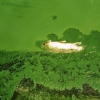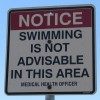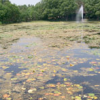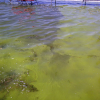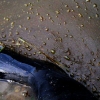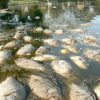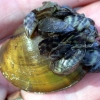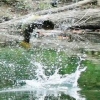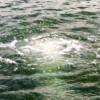-
Nutrient Overloading
Excess weeds and algal blooms are symptoms of a much deeper problem – Nutrient Overloading Lakes Deteriorate in Stages. Phosphates, nitrates, and other pollutants enter the lake from the watershed and essentially “fertilize the lake.” This is called external nutrient overloading. The fertilizers we use to …
Read More -
Warning Signs
What Warning Signs Do You See? The more you know about what you’re seeing, the better prepared you’ll be to take the correct action to restore your lake.
Read More -
Algae
Your Lake’s Only Hope is Dissolved Oxygen & Aerobic Bacteria We don’t take this statement lightly. Without these 2 fundamental building blocks of the ecosystem restored…the lake will never recover from the destructive cycle of nutrient overloading, weed growth, algal blooms, and muck accumulation. When …
Read More -
Muck
Got Muck? If your lake has excess weed growth and harmful algal blooms…you got muck. Muck is the real nutrient monster that keeps lakes in a eutrophic grip. Years and years (probably decades) of decaying organic matter have settled on the bottom of the lake, becoming a never ending resource …
Read More -
Beach Closed
No Swimming! “The lake at Cowans Gap State Park has been closed to all activities in response to the recently reported cases of E. coli infections. “This decision was made after six positive cases and three additional probable cases of Escherichia coli O157:H7 were identified …
Read More -
Fish Kills
A fish kill is a Serious Warning. It means your lake is in dire straights. A thriving fish population – which took decades to develop – can literally disappear overnight. It will take years to rebuild. If the cause is not addressed, it’ll happen again…and again. …
Read More -
Invasive Mussels
Attack of the Mussels North American freshwater lakes and rivers are under attack from two tiny invasive terrorists: Zebra and Quagga mussels. Introduced to North American waters in 1986 through discharged ballast water from transoceanic ships originating in the Caspian and Black Seas of Eurasia, their proliferation and subsequent environmental …
Read More -
Integrated Technologies for Complete Lake Renewal
Technologies that Work With Nature The fastest, most sustainable way to restore a distressed lake is to increase the lake’s nutrient procesing power. We take the same tools nature has been using to keep lakes clean for thousands of years and accelerate them to …
Read More -
Lake Bottom Aeration: Revives Lake Ecosystems
We Get Lakes Breathing Again – From the Bottom-Up! The fact is that most lakes are oxygen deficient. This cripples the lake’s ability to handle nutrients and keep plant and algae growth and muck accumulation under control. Many aeration technologies can add oxygen to the …
Read More



